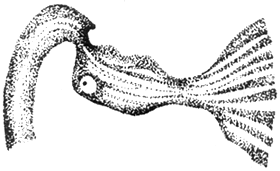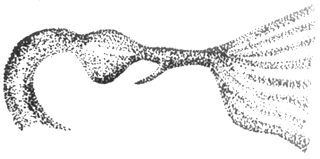| disease | Heterotopic Pancreas |
| alias | Aberrant Pancreas, Accessory Pancreas, Heterotopic Pancreas, Aberrant Pancreas, Accessory Pancreas |
Heterotopic pancreas, also known as aberrant pancreas or accessory pancreas, refers to isolated pancreatic tissue that grows outside the pancreas itself, with no anatomical or vascular connection to the normal pancreatic tissue. It is considered a congenital anomaly. This condition was first reported by Jean-Schultz in 1727. The exact incidence rate has not been documented in domestic or international literature, with an autopsy discovery rate of 0.11% to 0.21% and a male-to-female ratio of approximately 3:1. According to a review of domestic literature by Ding Shihai et al., the age of onset ranges from 5 to 61 years, with an average of 34.9±1.7 years, and a male-to-female ratio of 4.3:1.
bubble_chart Etiology
The occurrence of ectopic pancreas is related to abnormal embryonic development. During the 6th to 7th week of human embryonic development, when the dorsal and ventral pancreatic primordia rotate and fuse with the upper segment of the primitive gut, if one or several pancreatic primordia cells remain within the primitive gut wall, they may be carried away as the primitive gut elongates. The cell tissues derived from the dorsal pancreatic primordium will be carried to the stomach, while those from the ventral pancreatic primordium will be carried to the jejunum, forming an ectopic pancreas. If the pancreatic primordia extend into the gastrointestinal wall, biliary system, omentum, or even the spleen, pancreatic tissue may appear in these organs, also resulting in an ectopic pancreas.
bubble_chart Pathological Changes
Heterotopic pancreas can be found in any part of the abdominal cavity, most commonly in the duodenum, accounting for about 27.7%; followed by the stomach, about 25.5%; the jejunum about 15%; the ileum and Meckel's diverticulum about 3%; occasionally, it may also be found in the gallbladder, bile ducts, liver, spleen, mesentery, greater omentum, transverse colon, appendix, umbilicus, and other locations. In cases where heterotopic pancreas occurs in the stomach, over 50% are located in the distal half of the stomach, mainly on the anterior and posterior walls and the greater curvature, with the prepyloric region being slightly more common than the gastric antrum. In the duodenum, it is primarily located above the ampulla of Vater (papilla of Vater), especially in the duodenal bulb. Ding Shihai et al. summarized 67 cases of heterotopic pancreas from domestic literature, reporting the following locations: stomach in 33 cases (49.8%, including 28 cases in the gastric antrum (84.8%) and 5 cases in the gastric body (15.2%)); duodenum in 8 cases (11.9%); jejunum in 15 cases (22.4%); ileum in 8 cases (11.9%); and one case each in the common bile duct, ascending colon, and peripancreatic adipose tissue.
Most heterotopic pancreatic tissues appear as pale yellow or pale red, single lobulated nodules, with occasional multiple nodules. The diameter of heterotopic pancreatic tissue is mostly 1–2 cm, with cases exceeding 6 cm being extremely rare. It is often embedded in organs other than the pancreas, such as within the gastrointestinal wall, where it is mostly located beneath the mucosa. Ding Shihai summarized 29 cases from the literature, including 14 cases in the submucosal layer (48.3%), 6 cases in the subserosal layer (20.7%), 4 cases between the submucosa and muscular layer (13.8%), 3 cases within the muscular layer (10.3%), and 2 cases involving the subserosal, muscular, and submucosal layers (6.9%). The appearance of heterotopic pancreas resembles that of normal pancreatic tissue but lacks a capsule and cannot be peeled off. Its center is slightly depressed, often with an opening of the pancreatic duct. Microscopically, it exhibits normal pancreatic tissue with lobular structures such as acini and ducts, and about one-third of cases show islets of Langerhans. Occasionally, heterotopic pancreatic tissue may develop acute pancreatitis, chronic pancreatitis, cysts, adenomas, or adenocarcinomas.bubble_chart Clinical Manifestations
Ectopic pancreas is often asymptomatic and may be incidentally discovered during surgery or autopsy. However, when it grows in certain specific locations or undergoes pathological changes, it can manifest the following six clinical presentations, sometimes referred to as the six types:
1. Obstructive Type
Ectopic pancreas located in the digestive tract can cause obstruction or stenosis of the affected organ. For example, if situated in the gastric antrum, it may lead to pyloric obstruction; if near the ampulla of Vater, it can cause biliary obstruction; and if in the intestines, it may result in intestinal obstruction or intussusception.
Ectopic pancreas is prone to causing gastrointestinal bleeding, likely due to congestion, erosion of the surrounding gastrointestinal mucosa, or erosion of mucosal blood vessels.
3. Ulcerative Type
Ectopic pancreas in the gastrointestinal tract, stimulated by digestive juices, may secrete trypsin, digesting the gastric or intestinal mucosa to form ulcers. When located beneath the mucosa, it can compress the overlying mucosa, leading to mucosal atrophy and subsequent ulceration.
4. Tumor-like Type
Ectopic pancreas situated in the submucosa of the gastrointestinal tract may cause local mucosal protrusion; if within the muscular layer, it can thicken the gastric or intestinal wall, often misdiagnosed as a gastrointestinal tumor. Occasionally, ectopic pancreatic tissue may develop into an insulinoma, causing hypoglycemia, or undergo malignant transformation, presenting as pancreatic cancer.
5. Diverticular Type
Ectopic pancreatic tissue may reside within congenital diverticula of the gastrointestinal tract, most commonly in Meckel's diverticulum, and may present with diverticulitis or bleeding.
6. Asymptomatic Type
Since ectopic pancreas is a congenital developmental anomaly, some cases may remain entirely asymptomatic throughout life or be incidentally discovered during surgery or autopsy.
Most ectopic pancreases do not cause any symptoms, and there is currently a lack of specific examination or diagnostic methods. Only a few cases can be diagnosed due to their unusual location or larger size.
Ectopic pancreas in the prepyloric region may cause symptoms of pyloric obstruction (obstructive type). Upper gastrointestinal barium meal examination may reveal a filling defect in the prepyloric region (Figure 1), with a smooth surface, clear boundaries, a wide base, and immobility. If a small barium spot (resembling an ulcer niche) is seen in the center of the filling defect, it is called the "umbilical sign" (Figure 2). In the tangential view, a thin tubular dense shadow may sometimes be seen extending into the filling defect, known as the "duct sign" (Figure 3). The umbilical sign and duct sign are characteristic manifestations of ectopic pancreas.

Figure 1: Barium meal examination of ectopic pancreas in the gastric antrum shows a filling defect with smooth edges.

Figure 2: "Umbilical sign" of ectopic pancreas in the gastric antrum.

Figure 3: "Duct sign" of ectopic pancreas in the gastric antrum.
When the ectopic pancreas is located in the gallbladder, cholecystography may reveal a fixed filling defect on the gallbladder wall. The shadow of gallbladder stones is mobile, which can help differentiate the two; however, distinguishing it from gallbladder polyps is difficult.
Endoscopy and biopsy: For ectopic pancreas located in the stomach or duodenum, fiberoptic gastroscopy or cholangiopancreatoscopy can be performed to determine its location, size, and morphology, and to differentiate it from other diseases in the stomach or duodenum. If the pancreatic duct opening can be visualized, a definitive diagnosis can be made. Biopsy confirming ectopic pancreatic tissue can also establish the diagnosis.
bubble_chart Treatment Measures
When ectopic pancreas causes significant symptoms due to secondary pathological changes, surgical treatment is required, such as subtotal gastrectomy, intestinal resection, or diverticulectomy. For smaller lesions, partial resection of the gastric or intestinal wall followed by suturing may be performed. Attempting to simply strip the ectopic pancreatic tissue from the gastric or intestinal wall must be avoided. If ectopic pancreas is incidentally discovered during other surgeries and the patient had no preoperative symptoms related to it, the ectopic pancreas should be excised simultaneously if it does not interfere with the original procedure and removal is not difficult. Intraoperative frozen section should be performed, and if malignancy is found, the resection should be extended or radical surgery performed.
Common complications include: acute pancreatitis, chronic pancreatitis, cysts, adenomas, adenocarcinoma, etc.






